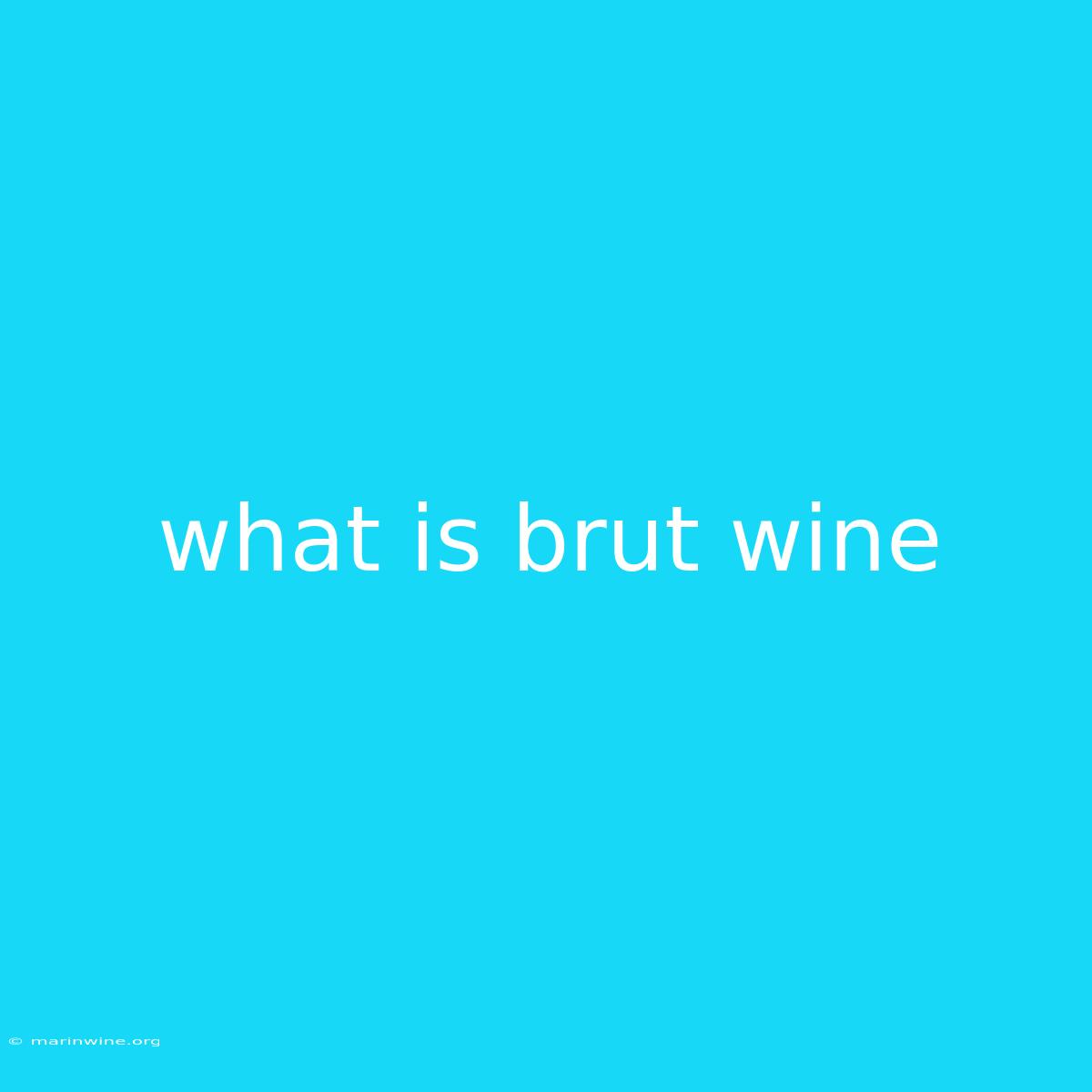Uncorking the Mystery: What is Brut Wine?
Have you ever seen a bottle of sparkling wine labeled "Brut" and wondered what it means? Brut is more than just a fancy name for champagne – it's a key indicator of sweetness! This article will delve into the world of Brut wine, unveiling its secrets and exploring its unique characteristics.
Why It Matters:
Understanding Brut wine is crucial for any wine enthusiast. Whether you're a seasoned connoisseur or just starting your journey into the world of sparkling wine, knowing the difference between Brut and other sweetness levels can help you choose the perfect bottle for your taste and occasion. This knowledge is vital for appreciating the nuanced flavors and complexities of this delightful beverage.
Key Takeaways of Brut Wine:
| Feature | Description |
|---|---|
| Sweetness Level | Brut is the driest category of sparkling wine, containing very little sugar. |
| Taste Profile | Brut wines often exhibit crisp acidity and bright fruit flavors with a clean, refreshing finish. |
| Food Pairing | Their dryness makes Brut wines excellent for appetizers, seafood, and lighter dishes. They can also enhance spicy foods. |
| Occasions | Brut is a versatile choice for celebrations, parties, and casual evenings. |
Brut Wine: A Deeper Dive
What Makes Brut Wine Dry?
The dryness of Brut wine is determined by its dosage, a small amount of sugar added to the wine after the second fermentation. Brut wines have a dosage of less than 6 grams per liter, resulting in a noticeably dry taste compared to other sparkling wine categories.
Beyond Dryness: Discovering the Nuances
While dryness is a defining characteristic, Brut wines offer a spectrum of flavors and aromas depending on the grape varieties used, the production methods, and the region of origin.
Key Aspects of Brut Wine:
- Grape Varieties: Chardonnay, Pinot Noir, and Pinot Meunier are the most commonly used grapes in Brut wines.
- Production Method: The "méthode champenoise" or "méthode traditionnelle" is the traditional production method for Brut wine, involving a second fermentation in the bottle.
- Region: The Champagne region of France is renowned for its Brut wines, but other regions like Spain (Cava), Italy (Prosecco), and the United States (California) produce high-quality Brut wines.
The Relationship Between Brut and Champagne:
The term "Brut" is often associated with Champagne, but it's essential to understand that Champagne is a specific type of sparkling wine produced in the Champagne region of France. Not all Champagne is Brut, and not all Brut wines are Champagne.
Champagne:
- Region: Champagne region of France.
- Production Method: "Méthode Champenoise."
- Sweetness Levels: Brut, Extra Brut, Brut Nature, and others.
Brut:
- Sweetness Level: Very dry.
- Regions: Champagne, Cava, Prosecco, and others.
- Production Method: "Méthode Champenoise" or alternative methods.
Frequently Asked Questions:
Q: What is the difference between Brut and Extra Brut wine?
A: Extra Brut is even drier than Brut, with a dosage of less than 6 grams per liter. It offers a more intense, crisp, and austere flavor profile.
Q: How do I know if a sparkling wine is Brut?
A: The sweetness level will be clearly indicated on the bottle's label. Look for "Brut" or "Brut Nature."
Q: Can Brut wine be aged?
A: Yes, some Brut wines can age well, developing complex flavors and aromas over time.
Q: What foods pair well with Brut wine?
A: Brut wines pair well with appetizers, seafood, salads, poultry, and lighter dishes. They can also complement spicy foods.
Tips for Enjoying Brut Wine:
- Chill the wine: Brut wine is best served chilled, ideally between 45°F and 50°F.
- Use the right glass: Champagne flutes or white wine glasses are ideal for showcasing the aromas and flavors of Brut wine.
- Drink slowly: Take time to savor the complexity and nuances of the wine.
Summary of Brut Wine:
Brut wine is a dry, crisp, and refreshing sparkling wine that offers a range of flavors and aromas. Its versatility makes it an excellent choice for various occasions and food pairings. Whether you're celebrating a special occasion or enjoying a casual evening, Brut wine is a delightful addition to any experience.
Closing Message:
The next time you're browsing the wine aisle, remember the secrets of Brut wine. This knowledge will empower you to make informed choices, unlocking a world of delicious experiences. From crisp and refreshing to complex and age-worthy, there's a Brut wine out there for every taste!

